Not wanting to let Jeff and Kris handle all the 2009 Top Ten list fun, I decided to join the list making extravaganza. Today I will be running down the top ten DSLR cameras for 2009. Digital SLR cameras have made some nice advances in the past year with additions such as HD Movie recording, higher resolution LCD view screens, and larger DSLR sensors. These extra features are helping drive increased DSLR sales to the amateur photographer.
Digital SLR cameras offer many advantages over their point and shoot brethren. They are designed to capture fast action, work well in low light environments, offer numerous lens choices and give the user as much control as desired. Their drawback is they are expensive compared to point and shoots and do have a learning curve. Once mastered, using a DSLR will be your first choice for creating incredible photos.
So today’s top ten DSLRs will be ranked using the scoring system from the main site, technogog.com.
The FreakScore or the technogog Score is our overall product score based on a combination of all expert and user reviews we have collected for a product.
You can read more about our ratings system HERE.
First Seen: 11 January 2009
Freakscore: 10/10
The Canon EOS 7D is the top dog according to the Freakscore ratings system. This digital SLR camera features eight frames per second (fps) shooting, new Zone AF mode focusing and 24p Full HD video recording. The unit features EOS advancements including a 19-point Autofocus system, a Canon iFCL Metering System (Intelligent Focus, Color, Luminance) and an Intelligent Viewfinder. An 18-megapixel Canon CMOS sensor and Dual DIGIC 4 Imaging Processors powers the EOS 7D’s 14-bit A/D data conversion and its ability to freeze fast motion in high-resolution with eight fps continuous shooting up to 126 Large JPEGS using a UDMA CF card, positioning this camera for the studio as well as the sideline. The EOS 7D supports from 100-6400 (expandable to 12,800) ISO settings that allows users to capture low-light images with or without a flash. It also features Full HD video capture at 1920 x 1080 resolution with selectable frame rates of 24p, 25p or 30p. Native 24p recording.
“Very fast performance; excellent photo quality; flexible autofocus system; big, bright viewfinder; streamlined interface; wireless flash control.” – CNET
“We have no reservations about giving the Canon EOS 7D an Editor’s Choice designation – it’s a great DSLR that just so happens to record high-definition videos. The big question, though: Is the camera worth its steep asking price? Happily, the answer is yes, since it’s an investment that will pay you back for years to come in terms of great photos. Moreover, for those who enjoy a challenge, it will take some time to learn all of the device’s capabilities. (Canon doesn’t supply an almost 300-page manual just for laughs.) Fortunately, this is one book we wouldn’t mind studying for a long time to learn its intricacies – suffice it to say there’s plenty to absorb between the covers. “- Digitaltrends
Pros: raw jpeg button, another great camera, big viewfinder with graphics, big buffer, fast shutter speed
Cons: white balance performance average, single card slot, several interface oddities, at least not yet, many menu layers
—
First Seen: 12 march 2009
Freakscore: 9.9/10
Coming in at a near perfect Freakscore of 9.9 is the Pentax K-7. This prosumer level camera has oodles of features at a lower price point than competitors with similar specs. It has numerous customization options, superbly built and designed with ergonomics in mind.
“Speedy 5.2 frames per second. Super sturdy construction. Lots of pro features at a prosumer price. Improved battery life and 100 percent field-of-view viewfinder. Faster, more robust processor. Live View with contrast focus and face detection. Shoots 5.2 frames-per-second with shutter speed up to 1/8000. The 77-segment metering system and 11-point AF system are quick and spot on. Internal mechanical shake reduction.” – Wired
“The bottom line is that the Pentax K-7 is an excellent camera which has almost every feature available to a DSLR. It brings flexibility and superb image quality to a variety of subjects in a compact and well thought-out design.” – Neocamera
Pros: compact and lightweight, good noise performance, good build, fast autofocus, faster frame rate
Cons: portrait underexposed slightly, no full hd video, inconsistent hd video quality, slow continuous focus, occasional overexposure
—
First Seen: 7 February 2009
Freakscore: 9.8/10
“The Canon EOS Rebel T1i is a solid mid-range DSLR with the added spice of HD video recording. We have no squawks on the camera section, other than noise becoming readily apparent beyond ISO 800. It’s responsive, and you’ll be more than happy with the prints, whether you making 4×6s or 13×19s. The HD videos are a mixed bag, with decent full HD results, but nothing you’d compare with a top-flight camcorder such as the Canon HF S10 or Sony XR500V.” – Digitaltrends
“Overall, Canon’s Rebel T1i is a feature-packed DSLR that offers a number of improvements over its predecessor, the best-selling Rebel XSi. The Rebel T1i also inherits a number of features from Canon’s higher-end models, but packages them into a smaller, lighter and more affordable form factor. In fact, we like this camera so much, we’re giving it our coveted Editor’s Choice award for product excellence” – HotHardware
Pros: full manual controls, image quality, great image quality, bright lcd, big lcd
Cons: exposed lcd, no microphone input, contrasty conditions, short battery life, slow focus
—
Panasonic Lumix DMC-FZ35 / DMC-FZ38
First Seen: 27 July 2009
Freakscore: 9.8/10
While not exactly a DSLR, this is also beyond any point and shoot with its DSLR like body and features. If you want 720P HD video and are looking for an affordable alternative to the more expensive DSLR cameras on the market then the Panasonic Lumix DMC-FZ38/FZ35 may be right for you.
“A better-than-average megazoom choice, the Panasonic Lumix DMC-FZ35 delivers standout video capabilities and an excellent manual feature set. Still, it suffers from a lot of the same drawbacks as its competitors, including weak photo quality”. – cnet
“Buy the FZ38 / FZ35 and you’ll get a compact, lightweight super-zoom camera with 12 Megapixel resolution, a flexible 18x zoom with excellent stabilisation and very quick autofocus, 720p HD video with the choice of encoding formats, support for RAW files, a medium-sized but good-looking 2.7in screen, manual controls, HDMI output and one of the best fully automatic modes on the market. It continues to be a highly compelling proposition.” – cameralabs.com
Pros: excellent image stabilization, fast focusing, ease of raw conversion, hd video, fast start u
Cons: operator s manual, mediocre optical viewfinder, warm white balancing indoors, user manual on cd, glossy screen
—
First Seen: 11 March 2009
Freakscore: 9.7/10
“Keeping technology advancements under wraps is hard enough with the speed information travels today, so Nikon have really managed to surprise the industry when introducing the D300s as a result. Keeping their ergonomic design of previous models and packing this new model full of next gen features such as HD recording really shows their commitment to producing a high quality camera that satisfies consumer need. Expect other manufacturers to try and match what Nikon has done here.” – Electronics Made Easy
“Here’s the thing about the D300s: It’s a great camera, no doubt. The problem is two-fold: At $1800, it costs the exact same as the D300 did when it was released two years ago, but beyond video, delivers no major advancements. There’s no new pixel-squeezing camera tech here. The other part is that the very shortly forthcoming Gizmodo
Pros: excellent photo quality, durable body, amazing af system, 720p video recording, virtual horizon feature
Cons: short battery life, a little expensive, mediocre battery life, mono sound, no liveview histogram
First Seen: 6 January 2009
Freakscore: 9.7/10
The Nikon D5000 is an upper entry level DSLR camera. Some of its features include 12.3 MP CMOS Sensor, live view, 720p movies and a 2.7 inch, 180 degree Tilt/Swivel LCD. It also includes features such as EXPEED high speed image processing, GPS compatibility, automatic built in pop up flash. Some of its additional features include Picture Control settings, D-movie, and Live view suited for video recording. Some of its additional specifications include 12.3 million effective pixels, supporting high ISO sensitivities and utilizes the Nikon DX format sized CMOS Sensor.
“Nikon’s D5000 is a good means to introduce former amateurs into the DSLR market. Easy enough for tyros to master, and capable enough to be thrown into backup duty by a serious hobbyist or professional, it is a well-built camera that can take almost any photo that someone likely to want this camera would want to take.” – MacNN
“The Nikon D5000 proceeded to kick ass in every category we tested it in, so it was no mystery that this was the entry-level DSLR to beat for 2009 after our journey. We loved the D5000’s advanced interface and external controls were plentiful. This is a DSLR that has a little something for every shooter, though the heavy artillery was there when we wanted to pull out the big guns. The flip-down LCD was a major help in tight shooting environments, though the camera was a bit bulky. Image quality was top notch, and even the infoSync World
Pros: full manual controls, image quality, great image quality, bright lcd, high iso performance
Cons: short battery life, slow focus, nothing yet, nothing significant, video quality
–
First Seen: 17 september 2009
Freakscore: 9.5/10
The Pentax K-X is a 12.4 megapixel CMOS sensor digital SLR that features sensor-shift Shake Reduction for stabilized image and video capture up to 4 stops max. It has a 2.7 inch LCD with Live View and Face Detection with contrast, phase difference, and Face Detection autofocus (up to 16 faces), records 720p HD Video in resolutions of 1280×720 at 24 FPS cinematic frame rate, using any PENTAX 35mm lens; and features Auto Picture and Scene Modes, creative processing and filter modes that provides user with ability to explore artistic freedom through unique special effects, true HDR image capture that blends 3 bracketed images into a single picture with optimal shadow, highlight, and midrange detail and a 4.7 Frames per Second capture speed and 1/6000 second maximum shutter speeds. The K-X also features the PRIME II image processing engine with 11 point SAFOX VIII autofocus system that tracks moving subjects, and is powered by AA batteries that allow users to capture up to 1900 shots.
“The K-x is a very capable little camera indeed. Pentax has managed to squeeze what is, for this class of camera, an impressive feature set into the camera’s minuscule, rather inconspicuous, body and the image quality, especially in low light, is the best we have seen so far in the entry-level bracket of the DSLR market. To put some icing on the cake, all of this comes at a currently, compared to the closest rivals, very attractive price point. To us the lack of visible AF points is the camera’s only real drawback but if you can live with this omission you can’t go wrong with the Pentax K-x”. – DP Review
Pros: reliable flash exposure, user definable auto iso, extensive white balance options, in camera raw conversion, lcd color fine tunable
Cons: no hdmi connector
—
First Seen: 12 February 2009
Freakscore: 9.3/10
The Nikon D3s has a full frame CMOS image sensor. It is a 12.1-megapixel DSLR camera that can shoot at the speed of 9 fps (frames per second). The LCD measures 3 inches and it features 921K (VGA) for its LCD dots. Auto-focus points are 51-point and it can capture videos (720p24) as well as audio for it features a built-mono. There’s a 3.5mm stereo for audio input purposes and for video input, there’s the HDMI slot. It also comes with improved AF-On and multi-dial controls. Also featured are ISO 200 – 12800 (ISO 100 – 102,400 in Boost mode); it can achieve eleven frames per second in continuous and DX mode; a larger buffer for 48 RAW frames in one burst; multi-CAM3500FX Auto Focus sensor (51-point, 15 cross-type, more vertical coverage); in-camera RAW processing; a 14-bit A/D conversion, 12 channel readout; auto-focus tracking by color; it has kevlar/carbon fibre composite shutter with 300,000 exposure durability; auto-focus tracking by color; auto-focus calibration and it features Scene Recognition System. It also supports DX lenses and a viewfinder automatically masks. It features Nikon’s EXPEED image processor. It has the startup time of 12 ms, shutter lag 41 ms and black-out 74 ms. There are dual compact flash cards and it supports compact flash UDMA. Its 3.0-inch features 922,000 pixels.
“This ain’t the same as the 12 megapixels on your CyberShot. Or frankly, Gear Patrol
“Typically an “S” update to a Nikon camera (e.g. N8008 to N8008s, D70 to D70s, D2X to D2Xs) represents only minor improvements and small feature updates to a popular camera. The D3s has the very much expected additions of the movie mode and sensor cleaning. However, the extra stop in its high-ISO performance should be very welcome by news, sports, and wedding photographers”. – photo.net
Pros: live view lcd
Cons: a little pricey, be patient, professional size and weight, 5000 price tag, try after the holidays
—
First Seen: 10 July 2009
Freakscore: 9.1/10
“The bottom line: Its feature set is basic even by entry-level standards, but the Nikon D3000 delivers the photo quality and performance you expect when stepping up to a dSLR, with an optional interface that’s very beginner friendly.” – CNET
“Overall, though, the Nikon D3000 did well enough that it would serve a consumer who would usually confine his printed output to 8×10, as they’ll likely like the brightly saturated color and seldom encounter the more pronounced noise at higher ISOs. Watch your focus, though, and make sure that you don’t move the AF point accidentally.” – Imaging Resource
Pros: simple unintimidating camera layout, innovative guide shooting mode, programmable fn button, extensive flash mode controls, simplified exterior
Cons: no rubberized grip, all plastic body, few scene modes, poor color accuracy scores, no video cable provided
First Seen: 3 February 2009
Freakscore: 9.1/10
The E-450 digital SLR is built on the E-420 model, with the additional “art filter” modes which first appeared on the prosumer-oriented Olympus E-30. The in-camera editing feature like “pop art”, “soft focus” and “pin hole” is enabled by the camera’s TruePic III+ image processor, eliminating the need for editing on a computer. The Olympus E-450 has an effective resolution of ten megapixels from a Live MOS image sensor, and accepts Four Thirds-mount lenses. ISO sensitivity ranges from 100-1600 equivalents, with exposure modes including Program Auto (with program shift capability), as well as both Aperture- and Shutter-priority and a fully Manual mode. It also features 18 scene modes and Scene Program AE mode that operates on a subset of five common scenes. The camera has 49-point Digital ESP multi-pattern metering, with center-weighted. The E-450 has a 2% spot option, three-point Phase Detection, as well as 11-point contrast detection using information from the camera’s image sensor when in Live View mode.
“With the Olympus E-450, the superior quality of E-System D-SLRs and ease-of-use of compact cameras are fused in a model that brings out the artist in anyone. Indeed, the successor to the renowned E-420 is packed with features that encourage novices to explore their creative potential and create masterpieces. Three in-camera Art Filters, for example, apply stylish effects to any image at the touch of a button. Meanwhile, image composition is simplified thanks to Live View depictions on the bright LCD. This latest addition to the Olympus E-System range is not only one of the smallest and lightest models on the market, it also boasts all the benefits of the Four Thirds Standard at an affordable price. And, of course, the E-450 has a full range of Olympus’ innovative E-System technology on board.” – PhotoReview
“It might come at a budget price with a smaller sensor than the competition, but Olympus’s E-450 gives you plenty of control and is a joy to use with its limited but brilliantly implemented set of features” – PhotoRadar
“Olympus keep releasing cameras that are competing really well with Canon and Nikon. The menus are easy to use and they sport features that comparable cameras from the other manufacturers don’t have. In this case it’s the Art Filters and exposure compensation giving that extra bit of freedom to expand your creativity.” ePhotoZine
Pros: Lots of features for the newcomer to try, Standard menu system for back-up camera, Good color reproduction ,Excellent noise control, No loss of screen when focusing in live view
Cons: Too many buttons, ISO levels too low, Only three Art modes
You can find a few thousand more DSLR Camera reviews HERE on our main site.

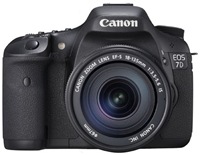
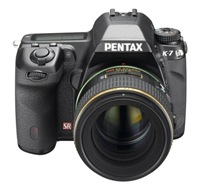
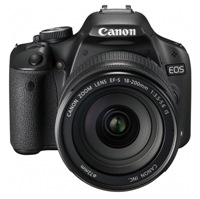
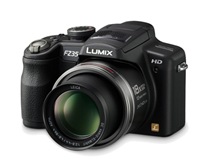
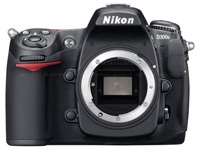
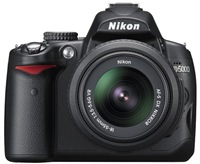
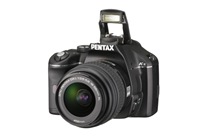
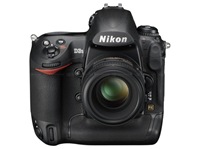
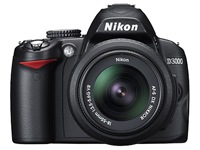
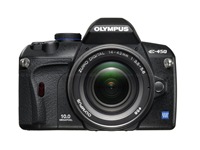
9 comments for “Best of 2009: DSLR Cameras”